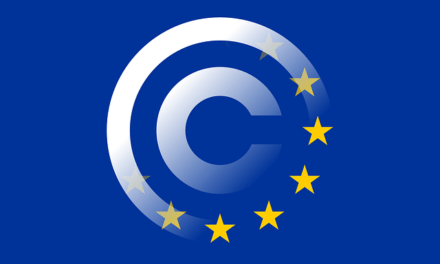Any links on this page that lead to products on Amazon are affiliate links and I earn a commission if you make a purchase. Thanks in advance for your support!
Music Publishing And Licensing 101: Sync Licenses And Master Use Licenses
As I frequently write, making money with your songs or music compositions isn’t easy.
Part of the problem is that aspiring songwriters and composers usually don’t know much about the music business and don’t know the avenues available to them to create income from their work.
This article is going to talk about one very important way to make money – through licensing your music to music users such as TV and film production companies, advertising agencies, and others.
The ways you do this is through sync licenses and master use licenses.
Check out my complete list of music business articles:
- Music Business 101: Making Money In Music Through Music Licensing
- Music Business 101: How to Copyright Your Music (For Composers & Songwriters)
- Music Publishing And Licensing 101: Sync And Master Use Licenses
- Music Publishing And Licensing 101: Mechanical Licenses
- Making Money In Music: Performance Royalties And ASCAP, BMI And SESAC
How Does Licensing Work?
First off, licensing your work involves knowledge of copyright; for a short guide see this article: Music Business 101: How to Copyright Your Music (For Composers & Songwriters)
As a composer or songwriter, you can license your songs or music cues to any music user for a fee. To do so, you need ownership or control of the music itself (and the sound recording) to be able to grant to the other party the right to use the music.
As I talked about in my article on copyright, any song or composition you create and record has two parts in the eyes of copyright:
- the musical composition
- the sound recording of that musical composition
The composition is the melody, chords, and lyrics and the musical work.
The sound recording is your particular audio version of the musical work.
When you create a new original work and record it, you are the owner of the composition and the sound recording.
Here’s an example to make this clear.
“Love, Love, Love” Example
You write a song (both music and lyrics) that you call “Love, Love, Love” and make a simple piano/ vocal demo of the song.
Under the U.S. copyright laws, as soon as this song is in a fixed form (such as recorded to a mp3 or CD, or written on paper) you are automatically protected under the copyright laws.
Writer and Publisher Ownership
Any new composition you create will have a writer portion and a publisher portion.
You are the author of the work.
AND, and this is important, as long as you have not assigned the publishing to another party, you also own your publishing rights.
Writer and Publisher Royalties
This is critical to understand when it comes to receiving royalties from placements of your work.
To understand how royalties are divided, think of the total royalty monies available as a pie.
Having 100% of your writer’s royalties equals 50% of the pie. 100% of the publisher’s royalties equals the other 50% of the total pie.)
To collect publishing royalties, you would need to create a separate entity that is your publisher. This can be as simple as using your own name (John Smith Publishing), or setting up a corporation or LLC.
OK, it should be clear that you own and control all writers and publishing rights to both the composition and the sound recording.
Publishers Make The Deals
You need to have ownership or control of the publishing if you want to license your music. The publisher typically controls the work and is the one who obtains licenses for the music.
So, if you want to license the song to a television series for inclusion in an episode, you have the authority to do so through your publishing company.
Sync Licenses And Master Use Licenses
A sync license allows a music user to use a particular piece of music in conjunction with a visual media such as a motion picture, television production, video, or advertising commercial.
For example, if Verizon wants to use AC/DC’s song “Back In Black” for a TV advertising campaign, it has to get a sync license from the publisher(s) of the song.
A Master Recording License (also called a Master Use License) is needed for obtaining permission to use a particular sound recording of a song.
In our example, a master use license is needed to use AC/DC’s version of the song.
If Verizon wanted to get a different artist to record the song, they would not need the master use license from AC/DC’s publishers, only a sync license.
NOTE: If you need the master rights to the sound recording you must also obtain the sync rights to the musical composition.
Sync and Master Use License Fees
Sync licenses fees can be for a few hundred dollars to many thousands, depending on use, frequency, exclusivity, and other factors.
For TV and film projects, the show’s music budget will be the most important determining factor of the amount paid for licensing.
Many times, a music supervisor responsible for finding and licensing music cues works his or her budget from highest costs to lowest.
For example, let’s say a film project has a music budget of $200,000. The music supervisor will first deduct out the cost of the score composer’s fee. Then they will price out any songs or material needed from “name” acts or artists.
The reason they do it this way is that they know that licensing a popular song is going to cost a lot more than licensing a song from an unknown band.
Let’s say the hit song they want for the opening titles is going to cost $75,000, and the closing song by another top artist is $50,000. If the composer in this example is paid $20,000, then this leaves $55,000 for all the rest of the songs.
Featured Use
A song that is featured and plays a key role in determining the emotions and mood of a scene will likely have a higher value in the director’s mind.
The more importance of a song or cue to a film or show, the more they may be willing to pay more for it.
Source Cues
A source cue, such as a song on the radio in a car or a song playing in the background in a bar, is much less important to the film and thus commands a far lesser license fee.
Licensing Deal Example
Here’s an example of how a licensing deal may work:
Joe Songster is a songwriter who frequently collaborates with Julie Lyricstein, a lyricist.
Joe writes the music, and Julie writes the lyrics.
They have agreed upfront in writing that the song they create will be split 50/50 as writers and 50/50 as publishers.
Because Julie really enjoys the business side, they agree that Julie will be the contact person for all representation and deal making.
They work hard on the song, which is a pop song called “Sync Me Up” and make a great sounding track suitable for broadcast. Joe records the song in his studio and plays all the instrumental parts himself.
They hire a friend of theirs to sing the song who is a highly sought-after session singer. They pay him a session fee for his work and have him sign a waiver that buys him out for this song.
Once the song is finished, Julie registers the song at the U.S. Copyright Office. Although the song is protected under copyright law once it is fixed in some tangible form, she files the registration for the extra protection that registering works with the Copyright Office give registrants.
Once all the business aspects are taken care of, Julie can focus on marketing and placing the song.
Both Julie and Joe think the song could be a hit, and Julie works hard to place it in a TV show or film and create some income from it.
Julie comes across a listing for a film seeking pop songs in the style of John Mayer.
“Sync Me Up” seems perfect for the film and she submits the song to the music supervisor.
About two weeks later Julie gets a call from Lance License, the music supervisor she sent the song to. The following is their conversation.
Lance: Hi Julie. This is Lance License, music supervisor for Nightlight Films. We really like your song “Sync Me Up” for our film Popped! and I’d like to talk to you about licensing it.
Julie: Hi, Lance. Sounds great! Can you tell me a bit about the film and how the song is going to be used?
Lance: Sure. Popped! is about a band trying to make it in the music business. It’s a PG-13 film, so it’s a pretty sanitized version of the biz. It’s closer to Josie and the Pussycats than Rockstar.
We want to use your song in a scene where the band is all bummed out about how they are not getting anywhere, and then they hear their song on the radio.
It won’t be just another source cue – it’s a dramatic moment where everything turns.
Julie: Sounds good so far. Is it for theatrical release?
Lance: Right now, it’s for a cable TV release. I doubt it will go theatrical.
I have some questions for you… You control the master, correct?
Julie: Yes, my co-writer and I share writers and publishing.
Lance: Great. You included all that info in your email. It’s good to see you are organized. I can’t tell you how many submissions I get without even a phone number to contact!
As far as payment, we can pay you $1,500 a side as a license fee for your song. It will be non-exclusive. And of course want the rights to use the song in the film in perpetuity.
Julie: What about if they want to use the song for promos or trailers outside the movie?
Lance: All uses of the song in conjunction with the film would also be included in the agreement and license fee. What do you think? Is it a go?
Julie: Yes.
Lance: Great! I’ll email over a deal memo for you to sign right now to get things rolling. You should get the actual licensing agreement early next week.
Julie: Great. Thanks for picking our song!
Lance: I thought it was a great song, and it worked really well for the scene. Call me if you have any questions. Oh yeah, we’ll get you a copy of the cue sheet after the production wraps.
Julie: Thanks, Lance.
Here’s an explanation of some of the terms that come up in negotiating a license:
Side: This means the two rights needed to license a piece of music.
Lance mentions they have $1,500 a side. This means that they will pay $1,500 for the sync rights, and $1,500 for the master use rights.
Assignment: This is the transfer of rights from one party to another.
Split: This means the percentage of ownership between the writers or composers.
Cue sheet: This is a document that needs to be filed with the performing rights organizations (ASCAP, BMI, and/ or SESAC) for you to be paid for any performance royalties. It lists all the compositions, their durations, the writers and publishers, their PRO affiliations and splits, and the type of usage of the music.
PRO: This is shorthand for performance rights organization.
Licensee: This is the person or party requesting a license.
Licensor: This would be you, the person owning or controlling the music to be licensed. You can remember it this way: the licensee has to knock on the door, and the licensor is behind the door.
Deal Memo: A deal memo is usually a one-page document outlining all the basic info discussed. Production companies tend to use deal memos to get things rolling right away. They rarely have the time to get all the contracts done before the production has to be finished.
When licensing a piece of music, make sure you have all the following information at hand:
- the names of the writer(s)
- the writer(s)’ performance rights organization (PRO) affiliations
- the name of the publisher(s)
- the publisher(s)’ performance rights organization (PRO) affiliations
- writer and publisher tax ID numbers
- the splits (how the ownership of the music is divided)
A week later Julie receives the original licensing agreement. It is a combination synchronization and master use licensing agreement, which is common.
Sample Sync and Master Use Licensing Agreement
Following is a sample of a sync and master use licensing agreement.
Note: This sample license is provided for educational purposes only and is not intended to be used as a valid legal document. Please consult a qualified music attorney if you are in need of a sync license.
SYNCHRONIZATION AND MASTER RECORDING LICENSE
Agreement made as of November 7th, 2016, by and between:
Nightlight Films LLC, 6762 Sunset Blvd., Suite 355, Hollywood, CA 90047 (“Licensee”), and
Joe Songster and Julie Lyricstein, 1120 Maple Lane, Santa Monica, CA 90405 (“Licensor”).
- Grant of Rights. Subject to the provisions of this Agreement, Licensor hereby grants to Licensee the following non-exclusive rights in the Territory during the Term of this Agreement with respect to the musical composition/ master recording entitled:
“Sync Me Up”
Written by Joe Songster (BMI) and Julie Lyricstein (ASCAP), published by Songster Publishing (BMI) and Happy Hearts Music (ASCAP), for use in synchronization with the television program entitled:
Popped!
(the “Program”)
(a) To record the music and lyrics of the Compositions/Recordings in synchronization or timed-relation with the Program and to make copies of such recordings and import said recordings and/or copies thereof into any country within the Territory. Licensee may use the Composition(s)/Recording(s) as Featured or Background Vocal (F,V or F,I) for an unlimited number of uses of any duration in the program. Notwithstanding the foregoing, each use will be considered a separate use for the purposes of determining fees as detailed in paragraph 4 below.
(b) To publicly perform, either for profit or non-profit, the Composition(s)/ Recording(s) as synchronized with the Program in the exhibition of the Program in all media now known or hereafter devised, including, but not limited to free, pay and basic cable television, Direct-By-Satellite (“DBS”), pay-per-view, subscription or closed circuit television, on-line services (whether viewable in real time or downloadable), on any interactive program, platform, media or storage device, now known or hereafter devised, common-carriers, such as airlines, boats, trains, buses, as well as distribution to educational institutions, churches, libraries, hospitals, prisons, military bases and similar places of non-commercial nature, including oil rigs.
Licensee shall also have the right to make and distribute videogram copies of the production embodying the composition and to distribute such videogram copies to the general public and for “home use” anywhere in the licensed Territory. “Videogram” shall include any and all audio and visual devices whether now known or hereafter devised, such as video discs, video cassettes, DVDs, and all similar compact audiovisual devices.
(c) To use the Composition(s)/Recording(s) in connection with the advertising or promotion of the Program thereof, whether radio or television commercials or otherwise.
- Limitations on Rights. All rights of every kind and nature in the Composition(s)/Recording(s) not specifically granted to Licensee in this Agreement are reserved by Licensor.
- Term/Territory. The term of this Agreement (the “Term”) commences October 23, 2016 and continues in Perpetuity. The territory covered by this Agreement (the “Territory”) is the world.
- Compensation. In consideration for this Agreement and the rights licensed hereunder, Licensee agrees to pay to Licensor the sum of one thousand dollars ($1,500) for the synchronization right and one thousand dollars ($1,500) for the master use right. Licensor will be solely responsible for payment of all third party expenses.
- Cue Sheet. Licensee shall furnish to Licensor a complete and accurate music cue sheet for the episode.
- Public Performance. The exhibition of the Program in the United States by means of television and on-line services is subject to Licensee having current performance licenses therefore from the appropriate performing rights society, i.e. ASCAP/BMI/SESAC, etc. If Licensee is not licensed for such performing rights, such exhibition is subject to prior clearance of the performing rights from the appropriate society.
- Representations and Warranties. Licensor represents and warrants that it has the full right, power and authority to enter into this Agreement, and that it is not currently and will not be during the Term of this Agreement, subject to any obligation or disability which will or might prevent or interfere with Licensor fully keeping and performing all of the agreements, covenants, and conditions to be kept or performed hereunder. Licensor agrees to indemnify and hold Licensee, its parents’, subsidiary’s, and affiliated companies, harmless from and against all loss, liability, damage, cost, and expense, including reasonable attorneys’ fees, of every kind or character suffered or incurred by reason of any breach of any representation, warranty, or agreement made by Licensee in this Agreement. Licensee will notify Licensor of each claim to which the foregoing indemnity applies promptly after Licensee has been formally advised thereof. Licensor also warrants that the said master recording was manufactured under appropriate agreements with recording artist(s), whose performance(s) are embodied herein. If said warranty shall be breached in whole or in part, Licensor shall either repay to Licensee the consideration theretofore paid to Licensor by Licensee hereunder, or shall hold Licensee harmless to the extent of such consideration. In no event shall Licensor’s total liability exceed the amount of consideration received by Licensor hereunder.
- Assignment. This license is binding upon and shall inure to the benefit of the respective successors and assigns of the parties hereto, provided that Licensee shall remain secondarily liable for the performance of its obligations hereunder in the event Licensee assigns this license or any of its rights.
- Miscellaneous. This Agreement constitutes the entire agreement between the parties hereto and cannot be modified except by a written instrument signed by both parties hereto. No waiver by either party or any failure by the other party to keep or perform any covenant or condition of this Agreement shall be deemed to be a waiver of any preceding or succeeding breach of the same or any other covenant or condition. All notices shall be in writing and shall be addressed to the respective party at the address set forth above, or to such other address as may be designed in writing. This Agreement shall be governed by and interpreted in accordance with the laws of the State of California applicable to agreements executed and to be wholly performed within such State.
Nothing contained in this Agreement shall be construed to evidence or create a joint venture or partnership between the parties or constitute either party as the agent of the other. Should any provision of this Agreement be held to be void, invalid or inoperative, such invalidity shall not affect any other provision hereof, but the remainder of this Agreement shall be effective as though such void, invalid or inoperative provision had not been contained herein.
In Witness whereof, the parties have executed this Agreement on this _____ day of ________________________ , 20____.
______________________________
Nightlight Films, LLC
(Licensee)
_______________________________
Joe Songster
(Licensor)
_______________________________
Julie Lyricstein
(Licensor)
Next article in the series: Music Publishing And Licensing 101: Mechanical Licenses
Check out my complete list of music business articles:
- Music Business 101: Making Money In Music Through Music Licensing
- Music Business 101: How to Copyright Your Music (For Composers & Songwriters)
- Music Publishing And Licensing 101: Sync And Master Use Licenses
- Music Publishing And Licensing 101: Mechanical Licenses
- Making Money In Music: Performance Royalties And ASCAP, BMI And SESAC















Thank you for this excellent explanation. The best I ever found. To put it al into a sample is so helpful. I’m still confused though.. Is it called Master Recording License or Master Use License? Or is that both the same? Thanks
Master Recording License or Master Use License are both correct and used.
Thank you…
Thank you for the well written scenario. It answered my question about Master Licenses that has so far been otherwise impossible for me to understand how the splits are paid. It seems that master license is a one time front-end fee and does not include back-end royalties. All back-end goes to the writer and publisher. Do I understand this correctly?
Yes, that is correct. Master and sync licenses are usually a one-time fee, though you can negotiate additional payments for different subsequent uses like streaming, theatrical, worldwide, etc.
Hello Michael! I too have a few questions. I am an independent artist/producer/composer and have a friend who connected me directly to the music director for a video production company. I’ve never had a placement before and there is potential that something will proceed. My question is how would I go about rates since I don’t have a publisher? I understand that rates can vary based on the person looking for music for a project but what if they company asks you directly “what are your rates”?
Also, can you get a deal where you don’t have the release ownership of the master?
Hi Tiffany,
What to charge has always been problematic. I always try to pass it back to them by asking what did they budget for music. Try to get them to give you a number. But of course, you’ll frequently hear that they have no budget for music and will want it for free or just for credits.
If I understand your question correctly, you always have to own or control the music track and sound recording to be able to license it.
I submitted a song to a respected Independent Sync Licensing company ( Crucial Music) and they liked the song and offered me a contract. It is a non-exclusive for three years. The payment terms they say are as follows:
“We take 100% of publishing only on placements we make and take 100% of master and collect 100% of royalties from your writers share.”
Does this mean – I would receive 100% of the writers royalties ( 50% of the pie) and they as my “publisher” would take the other 50% percent of the pie – 100% of the publishers royalties) AND they would keep all the Sync ? and Master ? license “fees” paid by the tv/film company? Is this the usual arrangement for Sync licensing companies… .. is this a decent deal?
Hi Ann,
I know of Crucial Music, they’re a pretty big library in the non-exclusive world.
They have a reputation of getting lots of placement but the deals are not great. A standard non-exclusive library agreement is the library collect 100% of the publishing, and usually 50% of sync. This is what Crucial used to offer.
A legit library never collects any of the writer’s share – that is paid directly to you from your PRO. That’s a major red flag if what you wrote is correct.
Hi Michael!
Thanks so much for this information! I have a question I was hoping you could answer:
If I have co-writers, but would like to submit our songs for sync opportunities, should I have a written agreement from the other writers that I may do so? If yes, do you happen to know if there is some sort of template for this?
Thanks so much!
Andi
Hi Andi, It would be a good idea to have a written agreement between all writers that says that one of you will be the point person, and that you can enter into agreements as the “agent “without everyone else having to sign. Basically the document authorizes you to act on behalf of all the writers in negotiating license deals.
Hope this helps! Michael
Thanks, Michael!!
I wrote a song with a co-writer but produced the song myself so I own the master. So my question is – If I have co-writers but I own the master do I still need to get permission (a written agreement) from the co-writers or can I enter into a sync deal without their consent/cooperation (as long as I pay the co-writer their 50% share of the songwriter royalties when I collect them?)
Hi Doug,
It is always a good business practice to work out in advance issues like this in writing from all co-writers and co-publishers. It helps avoid misunderstandings, especially when it comes to money!
Michael
I have checked your page and i’ve found some duplicate content, that’s why you don’t rank high in google, but there is a tool that can help
you to create 100% unique articles, search for; boorfe’s tips unlimited content